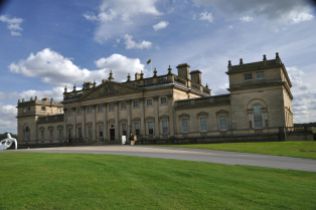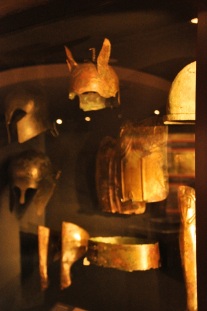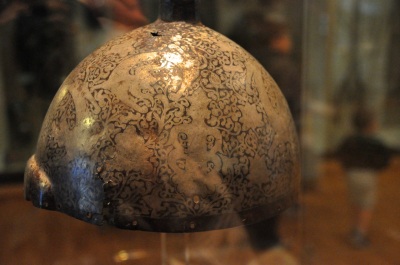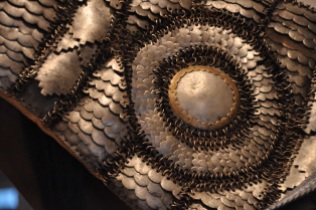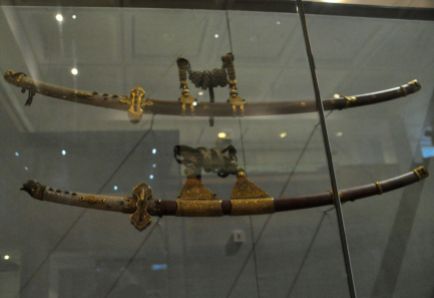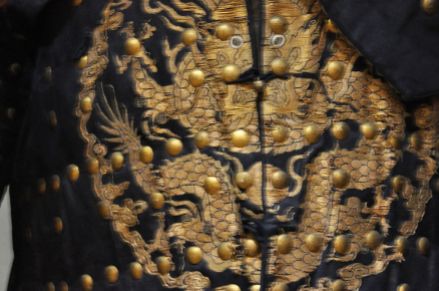Let me interrupt my on-going blog on Britain, just recently started, and jump ahead to share with you this cool cooking class we took – in Barcelona, Spain. My, we do get around, eh? Well, we’re here for several reasons – it’s warmer here, for one – but mostly we’re here because there are travel restrictions on how long you can stay in different parts of Europe, so we have to move around and play this silly traveling game. A real pain for us long-term travelers.
While walking down a narrow twisting alley in the barrio (the Gothic Quarter) of Barcelona, intentionally lost, we came upon a cooking school (Cook & Taste, http://www.cookandtaste.net). Opportunity! The food in Barcelona is really, really good, but in addition we had fallen in love with an Andalusian dish in Malaga, Spain (post of 7/10/13, “Malaga, Costa del Sol”), called berenjenas con miel, or eggplant with honey, a version of which we had found here in Barcelona. Could they show us how to make that dish? Sure, next week. And sure enough, next week it was offered, and here we are! This is what we learned. Disclaimer – things move fast when cooking, so many pictures are not in good focus.
FLATBREAD WITH TOMATO
In Granada, everybody was eating this tomato flatbread for breakfast in all the restaurants. Eh? We passed on it – I’ll have the apricot jam, please. Here in Barcelona, flatbread with tomato pretty much comes automatically when one orders jamon (cured
 ham) – and it goes really well together! It’s also really simple to make! Start with toasted bread, rub it lightly with garlic, cut a small tomato in half and rub one of the halves over the bread (a little garlic, a lot of tomato), drizzle with olive oil, sprinkle with sea salt, cut to a good size (in this case 4 slices) and you’re ready to chomp. It’s great with appetizers. (shown above).
ham) – and it goes really well together! It’s also really simple to make! Start with toasted bread, rub it lightly with garlic, cut a small tomato in half and rub one of the halves over the bread (a little garlic, a lot of tomato), drizzle with olive oil, sprinkle with sea salt, cut to a good size (in this case 4 slices) and you’re ready to chomp. It’s great with appetizers. (shown above).
CREMA CATALANA
 This desert needs to be prepared ahead and refrigerated. It’s like a creme brulee, but a softer custard with less egg, and I think a slightly thicker, well-carmelized sugar coating. Obtain lemon peel – our chef, Davíd, prefers to cut a large slice rather than using a grater to get the peel, since the grated peel can find it’s way into the custard and make it grainy. One needs to cut thin slices and remove any pith, which can be bitter, from the slices. Davíd also scored the inside of the
This desert needs to be prepared ahead and refrigerated. It’s like a creme brulee, but a softer custard with less egg, and I think a slightly thicker, well-carmelized sugar coating. Obtain lemon peel – our chef, Davíd, prefers to cut a large slice rather than using a grater to get the peel, since the grated peel can find it’s way into the custard and make it grainy. One needs to cut thin slices and remove any pith, which can be bitter, from the slices. Davíd also scored the inside of the
lemon peel a few times with his knife. Bring the milk just to a simmer (small bubbles only), add the peel and cinnamon, and let steep at least 10 minutes to infuse the flavors. The longer you let it infuse, the stronger the flavor. Meantime, blend the egg yolks with
the corn starch and sugar in a bowl until the sugar is completely dissolved and the mixture becomes foamy and almost white. Bring the milk mixture just to simmer again, and very slowly pour the mixture through a strainer into the egg mix, whisking to avoid cooking the egg; whisk all together.
Pour mixture back into the saucepan and cook over low heat, stirring vigorously all the time with a wooden spoon until the cream thickens and one can make a line on the back of the spoon, as shown. Pour into traditional terracotta dishes before the cream cools down. Shake and tap to level the cream. Place in refrigerator to chill.
Just before serving, sprinkle with sugar to coat and caramelize with a blowtorch. In order to avoid burning the sugar, you’ll probably need to do alternate torching with brief periods of cooling until you have the desired degree of carmelization. Let the sugar harden for a
couple of minutes. Add fruit for presentation, then have at it!
BERENJENAS CON MIEL y QUESO de CABRA [Eggplant chips w/ honey & goat cheese)
 Cut eggplant crosswise into paper-thin rounds with mandolin. Keep cuts circular (Davíd had to trim the eggplant to fit the slicer). Soak the slices in milk to reduce their bitterness – around 10 minutes. Fill a deep skillet halfway with oil (not extra virgin) and heat over moderate heat to 170° C. Blot the
Cut eggplant crosswise into paper-thin rounds with mandolin. Keep cuts circular (Davíd had to trim the eggplant to fit the slicer). Soak the slices in milk to reduce their bitterness – around 10 minutes. Fill a deep skillet halfway with oil (not extra virgin) and heat over moderate heat to 170° C. Blot the
eggplant slices with a paper towel to remove the milk. Dredge eggplant slices in the flour until thoroughly coated, lightly pressing if necessary to help the coating adhere, and gently shake to remove excess (the idea is to produce a very thin coating that will become crisp when fried). Drop the floured pieces into the 170° C oil.
Only do a few at a time (our pan dictated 4). Submerge, separate and turn slices in the oil with a slotted spoon until they begin to brown (golden brown), 1-2 minutes (or longer). Transfer the chips to paper towels to drain. Sprinkle with coarse sea salt. Repeat for remaining chips. Cut cubes of goat cheese.
 Place chips over cheese squares, drizzle with honey, and add toasted pine nuts and a presentation item (Davíd used viola flowers). Fight for your share. In Andalusia, the dish was a little different – no cheese, and they used a molasses-like cane sugar instead of honey. Both are good!
Place chips over cheese squares, drizzle with honey, and add toasted pine nuts and a presentation item (Davíd used viola flowers). Fight for your share. In Andalusia, the dish was a little different – no cheese, and they used a molasses-like cane sugar instead of honey. Both are good!
FRIED ARTICHOKES
As an added bonus, Davíd showed us how to fry artichokes using this same system. First he removed the scales to get to the heart, then removed the stem and trimmed the base. The top part of the artichoke, about half of it, is removed, the artichoke cut in half longitudinally, and the choke is cut out. It is then placed in water with parsley to prevent
the browning reaction (I didn’t know parsley did that!). When ready to fry, the artichokes are sliced very thin, dried on a paper towel, dredged in the flour like the berenjenas, and
fried. They fry quickly! Drain on a paper towel, sprinkle with sea salt, and they’re ready to go. Thanks Davíd, they were great!
COCA DE SEPINACAS A LA CATALANA CON BACALAO CONFITADO (Catalan style Spinach Flatbread with Confit Cod)
 Actually, before we started this recipe Davíd prepared a quick appetizer with the cod. The cod came from a farmers’ market where chunks had been soaking in salt water for 3 days. Davíd sliced off the remaining skin and cut 4 small pieces off the fish chunk. He drizzled the pieces with (infused) olive oil (see below) and added a garnish of chive
Actually, before we started this recipe Davíd prepared a quick appetizer with the cod. The cod came from a farmers’ market where chunks had been soaking in salt water for 3 days. Davíd sliced off the remaining skin and cut 4 small pieces off the fish chunk. He drizzled the pieces with (infused) olive oil (see below) and added a garnish of chive
sprouts and chopped pistachio nuts. Ready to eat! It was good, but next time I would add some sea salt.
For the flatbread, work all ingredients as a normal bread dough. Let it rest until if rises for 1 hour. Meanwhile, warm the oil in a saucepan, remove from heat, add the bouquet of spices (whatever you want), and let infuse for awhile. When the dough is ready, roll it out, trim to a rectangle, and cut it to size. Place the pieces on parchment on a tray, and brush with the infused oil. Cover with parchment, put weight on the top (another baking tray), and bake until golden brown (180°C, 10 minutes). Brush with infused oil again.
Cut the cod into pieces and put into infused oil that has just come to a simmer; remove from heat and let stand until cod looses transparency and becomes flaky. Clean the
spinach under tap water and remove stems. Let the raisins soak in Moscatell wine for 30 minutes. Brown the pine nuts for 2 minutes in a nonstick frying pan with a few drops of olive oil. Remove the pine nuts and add the infused raisins with their liquid; stir until thickened (this happens quickly) and pour back into their bowl. Add more oil and saute the spinach briefly, adding a sprinkle of salt; do this in small batches, adding a little oil
each time. Put some spinach on each piece of flatbread and arrange large flakes of the cod on top. Add some of the raisin mixture and pine nuts. Move to a plate and add more
raisins and pine nuts. Davíd also added a dollop of reduced raspberry balsamic vinegar on the side. It came from a bottle, and was a nice addition to the flavors. I would have added a little sea salt.
PAELLA DE MARISCO (Seafood paella)
 To this list of ingredients we added some fava beans, a red bell pepper as well as the green, asparagus, some of the unsliced artichokes, and smoked paprika. Prepare all the ingredients. Dice the onion and garlic. Cut some peppers into strips (for presentation) and dice the rest. Wash the asparagus and remove their lower stem. Grate the tomatoes
To this list of ingredients we added some fava beans, a red bell pepper as well as the green, asparagus, some of the unsliced artichokes, and smoked paprika. Prepare all the ingredients. Dice the onion and garlic. Cut some peppers into strips (for presentation) and dice the rest. Wash the asparagus and remove their lower stem. Grate the tomatoes
as shown. Cook the fava beans, drain and let cool; remove the outer skin.
Soak the clams in salty water and then rinse. Check that the clams and mussels are alive (if they are open, knock them on the table and discard if they stay open). De-beard the mussels and clean their shells (we scraped them with a knife). Clean the squid interior by scraping with a paper towel. Cut the squid into squares, about 1.5 inches. If desired, trim the whiskers off the prawns.
When everything is ready, heat the oil in a paella pan (until a drop of water sizzles) and saute the prawns briefly (count to 20, turn, count 20 again, remove). Turn on the outer
propane ring. For the paella you want even heat, and since you don’t want more than a layer or two of rice, you need a large skillet with a wide heat source (or two skillets …). Add the squid to the pan, spread out the squares, and wait until the squid squares are “popping up”. Add more oil to the side of the pan as needed. Do not turn. The longer you cook the squid the more tender it will be, so cooking it for something like 45 minutes
(overall) is good. Brown only 1 side (you’re going to be adding water). When the squares have popped up, stir and add the onion and the diced peppers and carmelize, constantly scraping the pan to deglaze. Add some wine to continue the deglazing as the water evaporates. 90% of the taste is this “attacking the brown”. When onions are browned, add the garlic and when it starts to brown, sprinkle with smoked paprika and add the grated
tomato on top of the paprika, mixing quickly so the paprika doesn’t burn. Scrape and deglaze and let all the liquid from the tomatoes evaporate. Add the asparagus, artichokes
and remaining pepper slices, stir, and cook for a few minutes. Add the rice and stir well to coat, a minute or two. Flatten the food to a layer, with no holes. Add the saffron to the boiling stock, then add the stock slowly to the preparation. Do not stir! Rice can’t be touched beyond this point!
Increase the heat to medium-high and cook for +/- 8 minutes. (Davíd used high heat for 5 minutes). Then add the clams and mussels, pushing them slightly into the remaining liquid. Taste the stock for seasoning – it must taste slightly salty (rice will absorb and dilute it). Reduce heat to a minimum (say the notes) and cook for an additional +/- 10 minutes (Davíd says cook for a total of 15 minutes). Davíd didn’t really time it so much as check it. As the liquid went down, he turned the heat down. It was done when there was
essentially no liquid at the bottom of the pan. You want rice with some dryness. Davíd also noted that after adding the clams and mussels one could take the pan to the oven at 180°C for 12 minutes (gets even heat!) rather than keeping it on the flame. Right near the end, add the fava beans and arrange the prawns in a decorative pattern and allow them to heat up. When the time is up, take the pan off the heat and cover with a cloth for 3 – 4
minutes to steam (the notes say only “stand for about 5 minutes before serving” [no mention of a cover]). For Davíd, wanting rice with some dryness, if the rice is done and there is still some water, he doesn’t cover or he covers with a cloth to let the steam escape.
One could cover with aluminum foil to keep the rice wetter.
You’re ready to go! It tasted every bit as good as it looks.
Well! Hope you enjoyed this diversion from our travel blog. The next post will be back in England, visiting the fabulous city of York.



































































































































































